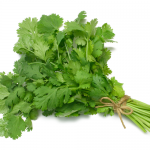Mint is not a herb we use often. Unless of course its in tea. Who doesn’t love a fresh mint tea?
We are afraid of overpowering our plate with the taste of toothpaste, or even worse mouthwash! It’s shunned from the kitchen cupboard, and chased out of the saucepans but its time we embraced the superpowers of the Mentha.
Most of the mint used in western cooking is spearmint. Peppermint is used to flavor dessert and ice cream.The menthol oil found in mint is the main component hosting a long list of health benefits. It boasts both a soothing aroma and inflammatory properties.
Mint aids digestion via the aroma stimulating the salivary glads to produce more saliva. Saliva contains digestive enzymes which start to break down food in the mouth and esophagus before it even reaches the stomach. With increased saliva production, there is an excess of these enzymes which help to break down the food at a more rapid rate. It has also been linked to improved digestion (in animal studies only) by relaxing the gastrointestinal tissue, thus allowing the part digested food to move through the gut faster. It is this processes that has been linked to improved relief from Irritable Bowel Syndrome (IBS).
The main volatile oils present in menthol have significant anti-microbial and anti-viral activities, strong antioxidants, anti-tumor actions and anti-allergenic potential. It is these properties that have suggested that mint can improve your skin health, improve oral health, reduce allergy symptoms (hay fever and asthma), and act as a anti-carcinogen.
It’s not just a fresh taste eh?
Our 3 favorite mint recipes:
– Good old simple fresh mint tea
– Minted pea mash
– Chickpea and marrow-fat burgers (coming soon!)


